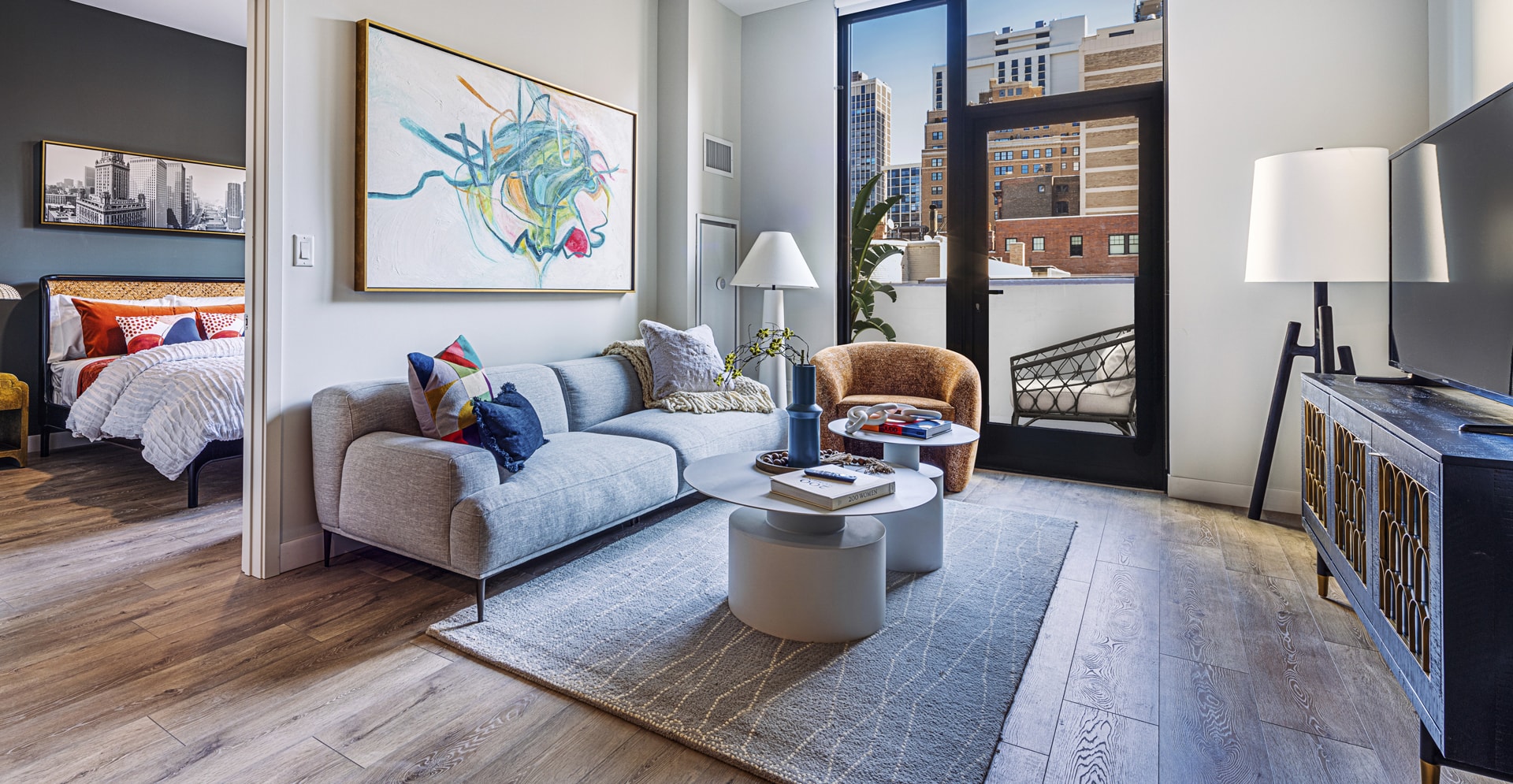- Buildings
- Built environment
- Housing
- Urban Design
The future of living will be shaped by a rising desire for experience over bricks and mortar.
The sharing economy enables people to rent rather than own. Many, it turns out, prefer it this way. Since eBay’s inception in 1995, subscription-based services like Netflix, Uber, Airbnb, Rent the Runway, and WeWork, have dramatically shaped how we eat, move, watch, and work. Their popularity only grew during the pandemic, becoming a daily tool to help us enact full lives within the confines of our homes. The global sharing economy will likely continue to expand, with its market value projected to reach $1.5 trillion by 2024.
Rapid changes over the last few years have shown us that the future—near, mid, and long-term—is never fixed, but there are also some fundamental human traits that never change. Broader societal trends like hybrid work and digital nomad lifestyles have long impacted workspaces and are now transforming the extent to which we see ourselves rooted in a place or community. This shift in how we view renting versus ownership comes when home ownership is out of reach for younger generations—Gen Z will face the largest average income-to-housing price ratio in 70 years. Due to the increase in interest rates from 3% to 6%, someone who can afford a $2,400 monthly payment went from a being able to afford a $554,000 home to a $363,000 home. Meanwhile, rentals are keeping pace with the rapidly evolving expectations of consumers. Instead of a steppingstone on the way to ownership, renting is set to be the preferred option—for everything from movies and clothes to homes and cars.
This shift is personified in the digital nomad lifestyle. Increasingly, countries are functioning as havens for remote workers seeking unique settings and experiences—a work life balance in the extreme. They are encouraged by countries like Portugal or Estonia to obtain work visas and contribute to their local economies. In this way, they can work and live in an Airbnb they rent, travel around town through a rideshare app, and deposit their checks in a digital bank.
The multifamily residential market is primed for offering the same perks and optionality that the sharing economy has capitalized on. Flexibility is the new currency. Renting allows people to change homes whenever they need or like, whether it is due to curiosity, a new job, lifestyle, priorities, or a relationship. This changes the brief for the home. Instead of choosing between urban or offgrid, flexibility or a single-family home, remote or traditional work, people can have it all. The sharing economy has now transitioned into subscription living. Never before have we asked for so much from our spaces. In response, we can design in a way that embraces all the varieties and possibilities of modern life.
Appealing to the ‘renter by choice’ starts with understanding that homes are just one part of a larger lifestyle ecosystem, one that ideally functions like the vision for the 15-minute city. In other words, subscription living is determined by the immediacy of experiences, not brick and mortar.
The lifestyle ecosystem is both public and private, becoming a part of the city while offering all the extra services that make life more comfortable, convenient, and enjoyable. Schools, healthcare, recreation, restaurants, parks, and retail provide residents the 15-minute city experience (more on this here) within steps of their front door. The effect is threefold: every customer becomes a potential tenant, residents are happier, and returns are higher. The benefits of the social component is clear in that residents who know another person in their building are 50% more likely to renew their lease and 90% more likely to do so if they know two people or more.
The individual units mimic the flexibility of the building. Adaptable and robotic furniture allow people to rearrange their living space according to the task at hand; an entertainment center becomes a workspace, a closet slides across the room making room for a virtual yoga class. Lighting, acoustics, and nature are key for the remote or hybrid worker. When looking for privacy, a resident can use phone booths in corridors, or for a change of pace they can stop by a lounge for coworking. These communal spaces are purposefully unnamed, as they are designed to be rearranged on the fly so that what was a coworking space in the morning can seamlessly become a party or game room by night.
The lifestyle ecosystem is a function of the interplay between design and technology. Over the last few years, the introduction of work-related technology in our homes has developed a reputation for speeding up the pace of our lives and removing the tranquility from our personal spaces. On the other hand, technology, like a dishwasher or refrigerator, can make our lives easier. There is a way for advanced technology to bring a sense of calm into our lives, to give us more time rather than less, and ultimately enable connection rather than isolation.





